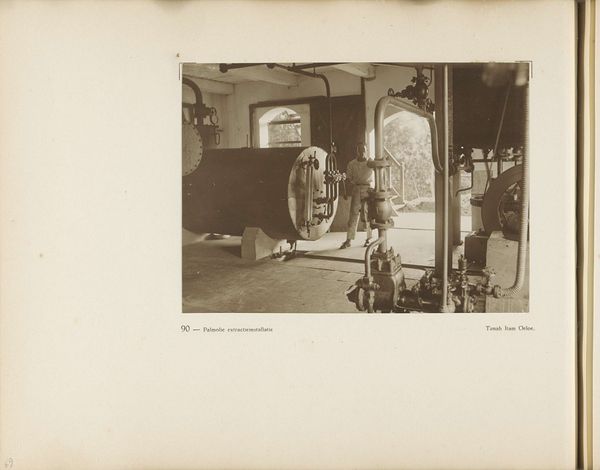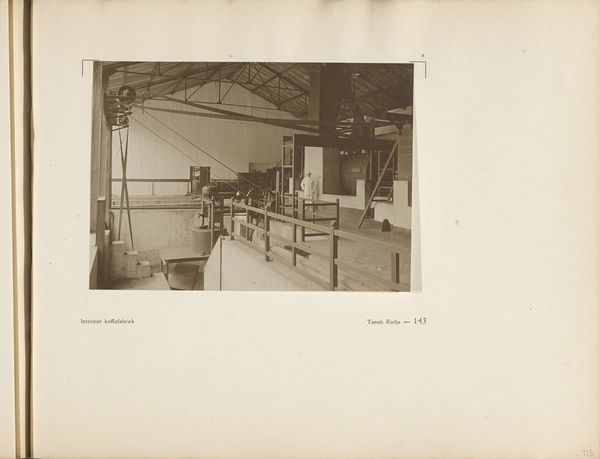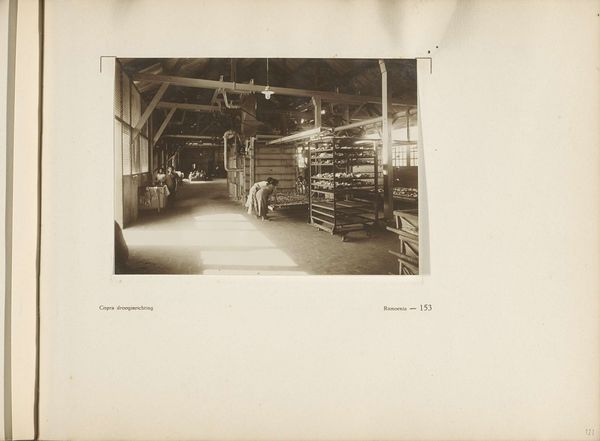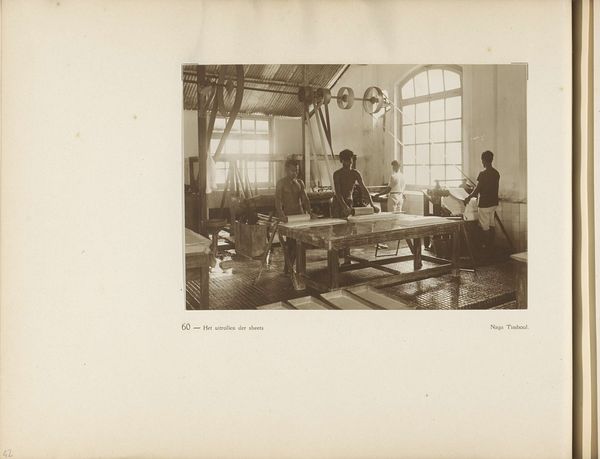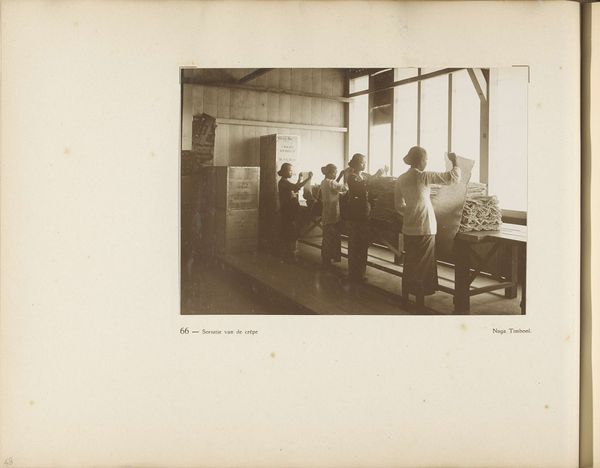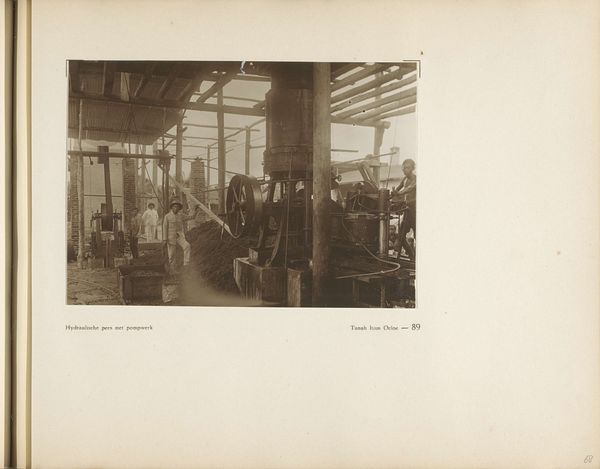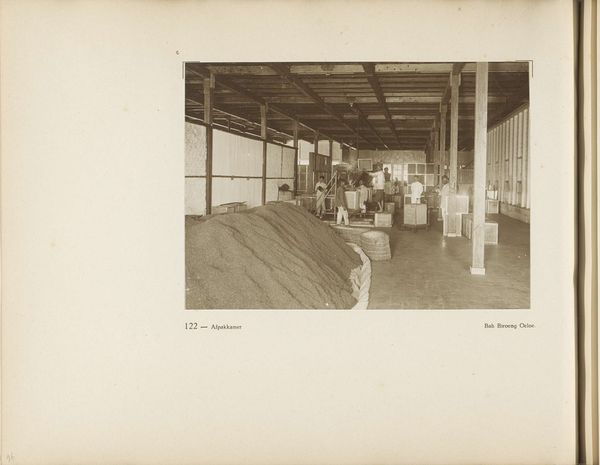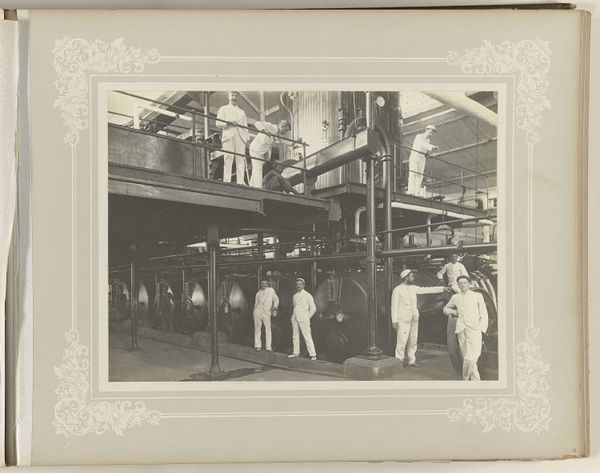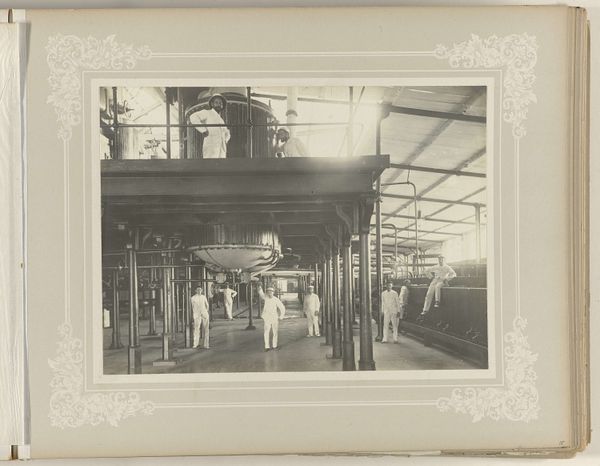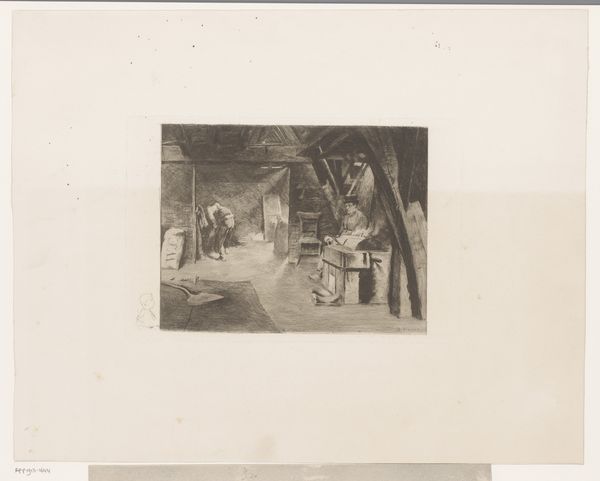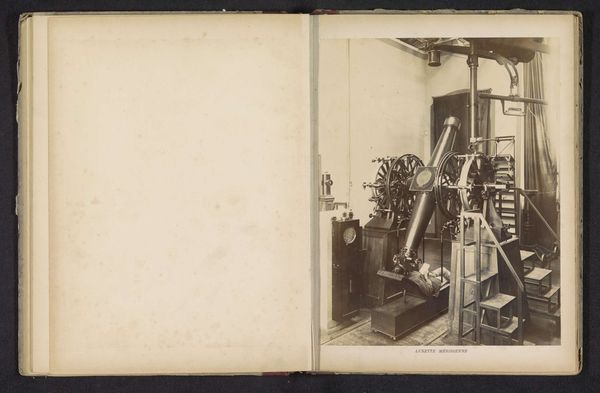
Pagina 91 van fotoboek van de Algemeene Vereeniging van Rubberplanters ter Oostkust van Sumatra (A.V.R.O.S.) c. 1924 - 1925
0:00
0:00
jwmeyster
Rijksmuseum
print, photography, gelatin-silver-print
#
portrait
# print
#
photography
#
gelatin-silver-print
#
genre-painting
#
modernism
Dimensions: height 240 mm, width 310 mm
Copyright: Rijks Museum: Open Domain
Curator: Here we have "Page 91 from a Photo Album of the General Association of Rubber Planters on the East Coast of Sumatra," taken around 1924-1925. It’s a gelatin silver print, now held at the Rijksmuseum. Editor: My first impression is the stark geometry, the pipes and cylindrical vats creating a fascinating spatial arrangement. The limited tonal range adds to the industrial mood. Curator: Indeed, and considering the historical context, we can examine this image through a postcolonial lens. It depicts an extraction installation, likely used in rubber production, on a plantation in Sumatra. This speaks volumes about the colonial exploitation of land and labor in the Dutch East Indies. Editor: Formally, I’m intrigued by how the photographer uses light to emphasize the metallic textures and the shapes of the machinery. There’s a careful orchestration of dark and light. Almost a sense of…mechanical ballet? Curator: Yes, and if we consider the photographer, J.W. Meyster, he’s not merely documenting a scene. He's participating in constructing an image of industrial progress and control. But we can also ask: whose progress and control? This photograph serves as a reminder of the human cost of rubber production. The seemingly neutral portrayal of technology belies the inequalities inherent in the colonial system. Editor: Looking at the composition, the human figure seems dwarfed by the machinery, highlighting humanity's evolving relationship with industrial technology. Curator: Precisely. That sense of scale is crucial. The photograph invites us to consider how modernism aestheticized—and often legitimized—industrial exploitation. It is imperative to connect this specific visual with global supply chains, environmental exploitation, and labor injustice that continues to impact communities around the world. Editor: Seeing it in that light offers such a richer context than merely observing its composition and lighting. Thank you. Curator: And thank you; seeing it simply as an artifact of balance and harmony can be a harmful viewpoint.
Comments
No comments
Be the first to comment and join the conversation on the ultimate creative platform.
